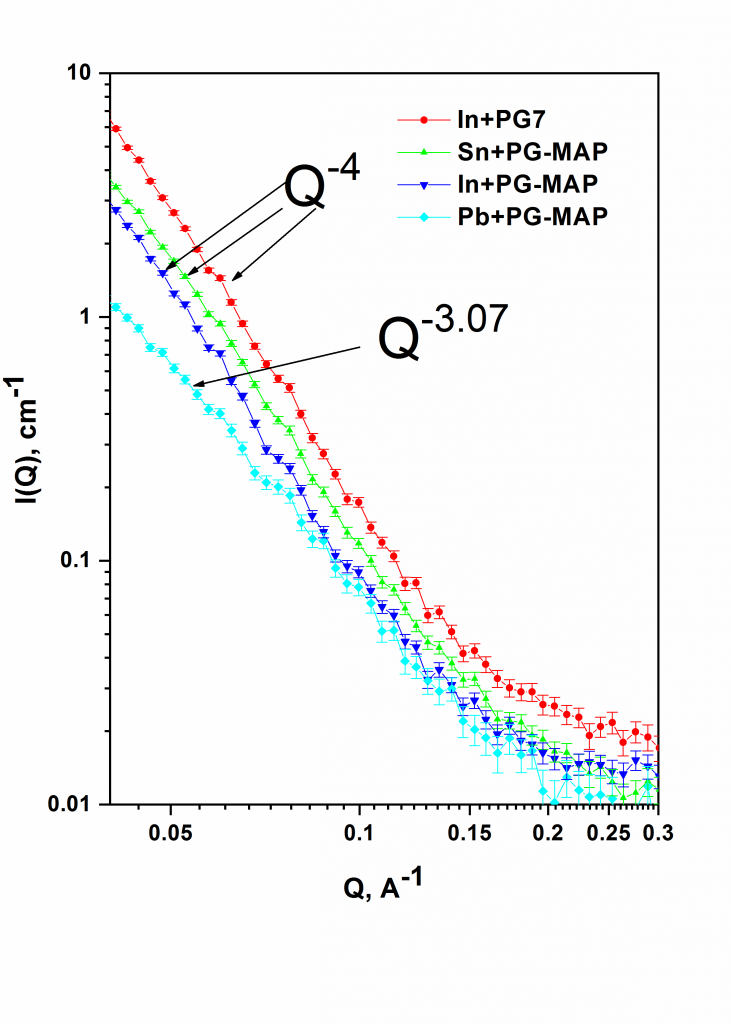NANOSYSTEMS: PHYSICS, CHEMISTRY, MATHEMATICS, 2020, 11 (6), P. 690–697
SANS studies of nanostructured low-melting metals at room temperature
A. A. Naberezhnov – Ioffe Institute, Polytekhnicheskaya 26, St. Petersburg, 194021, Russia; alex.naberezhnov@mail.ioffe.ru
S. A. Borisov – Ioffe Institute, Polytekhnicheskaya 26, St. Petersburg, 194021, Russia; sergey.borisov@mail.ioffe.ru
A.V. Fokin – Ioffe Institute, Polytekhnicheskaya 26, St. Petersburg, 194021, Russia; Midbarzin@yandex.ru
A. Kh. Islamov – Frank Laboratory of Neutron Physics, Joint Institute for Nuclear Research, 141980 Dubna, Russia; akhmed.islamov@gmail.com
A. I. Kuklin – Frank Laboratory of Neutron Physics, Joint Institute for Nuclear Research, 141980 Dubna, Russia; alexander.iv.kuklin@gmail.com
Yu. A. Kumzerov – Ioffe Institute, Polytekhnicheskaya 26, St. Petersburg, 194021, Russia
Nanocomposite materials (NCM) based on micro- and macroporous glasses containing nanoparticles of In, Sn and Pb into porous space have been studied by small-angle neutron scattering (SANS) at room temperature. The dependencies of fractal characteristics of metals embedded into the pores from the value of transferred impulse Q have been obtained. The existence of a critical spatial scale (15 – 16 nm) has been established, at which a change in the fractal characteristics of embedded metals takes plays. Distributions of pair correlation functions have been calculated for all types of the studied NCM. It is shown that in these NCM metals form the complicated space systems combining the crystalline and amorphous states of embedded metals.
Keywords: nanocomposites, small angle neutron scattering, porous matrices, fractal structures, low-melting metals.
PACS 61.12.Ex, 61.46.+w, 62.23.St
DOI 10.17586/2220-8054-2020-11-6-690-697
